Building Connection through Land Art
It’s been a very busy summer full of art, work, family, and spending time outside. Although I love writing about the intersection of creativity and climate action, I have too many things on my plate to manage all of them well. I’ll be putting Creative Climate Action on hold for now. However, I will still be writing for Yampa Valley Sustainability Council’s Climate Corner. If you are not following that Substack newsletter, I suggest you do! For now, we have a collaborative post to share with you about land art.
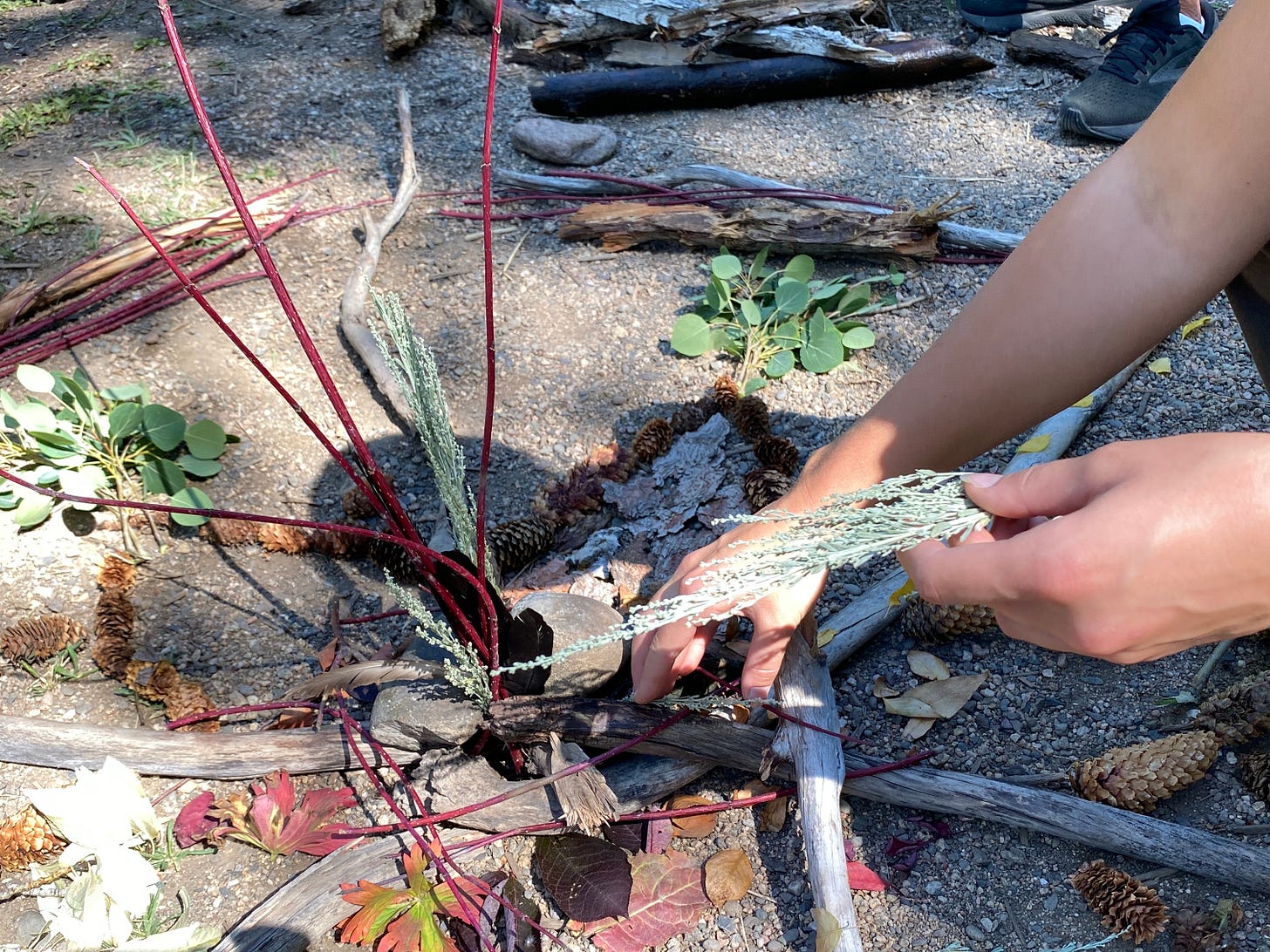
There are many forms of art that celebrate the natural environment, but fewer that involve interacting with the landscape in real time. Creating small scale, temporary land art is a way to connect with the biodiversity, history, and beauty of a place. This is an immersive experience for the creators, and can also be wonderful and interesting for viewers who find the finished art.
Land art history
Modern land art, or earth art, began as part of the conceptual art movement in the 1960s and 1970s. A group of artists became interested in natural sites, different ways of making artwork, and circumventing the commercial art system. Artists began collecting natural objects or creating site-specific works. Some used machinery to make earthworks or build embedded structures within the landscape, and others made temporary creations. These were documented with photos, film, and maps for exhibition in galleries. Some artists also created work in a gallery by bringing natural materials from the landscape into sculptures and installations.
Temporary land art installations
Over time, land artists have mostly moved away from large earthworks or permanent installations to creating different types of temporary, ephemeral works. Some people consider land-altering, permanent, or high impact installations to be destructive and unethical. Instead, it’s a benefit to create work that doesn’t harm the plants, animals, or ecosystem, but creates a brief commentary and relationship with the land. Using found natural materials like sticks, animal bones, leaves, ice, or snow as building materials also communicates the ways nature is impermanent and always evolving.
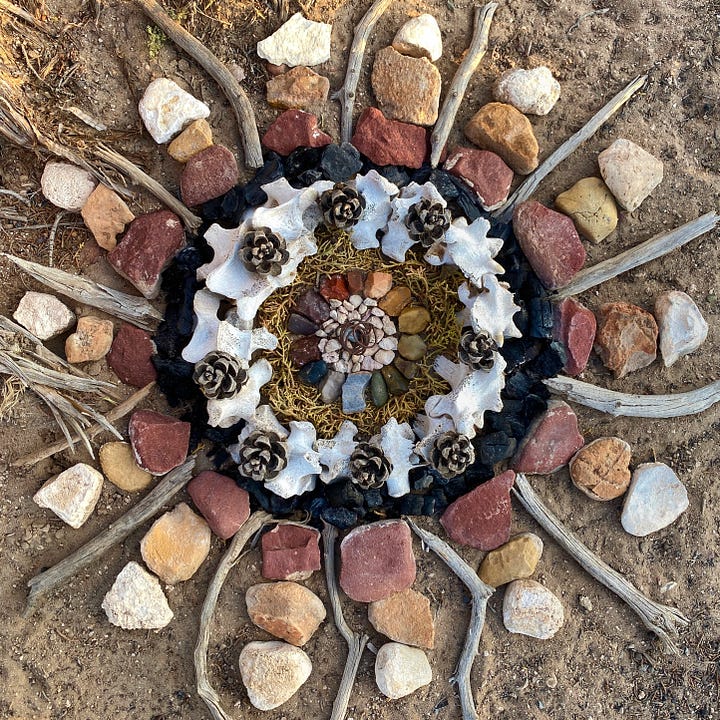
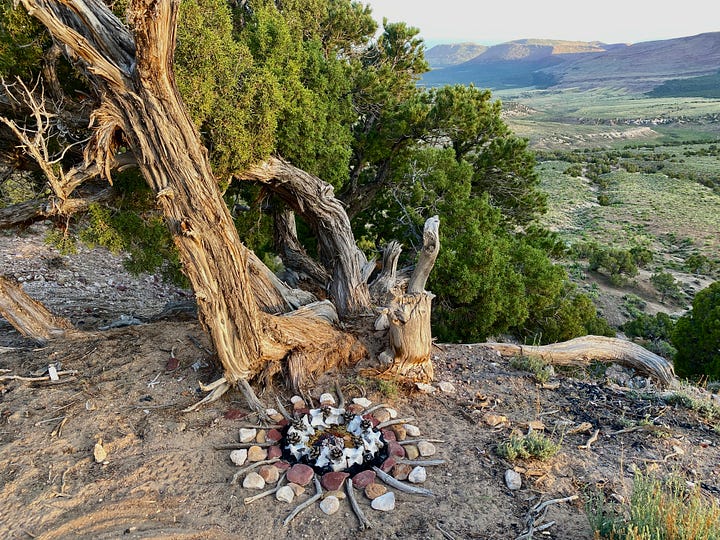
I often create small, temporary designs using natural and found objects when I’m camping. I call these mandalas, and they feel like a way for me to share appreciation for the beautiful surroundings. I only use what I find in the immediate area, or within a half hour walk or so, and I rarely pick anything currently living, because that feels destructive. I like the way each mandala has a very different look based on the environment. I also like how they might surprise the next group that comes to camp after us, but the elements of the art will quickly scatter and nothing will remain that wasn’t in the area originally.
Some of my favorite artists working with temporary land art are:
Andy Goldsworthy
Jon Foreman
James Brunt
Sonja Hinrichsen
Day Schildkret
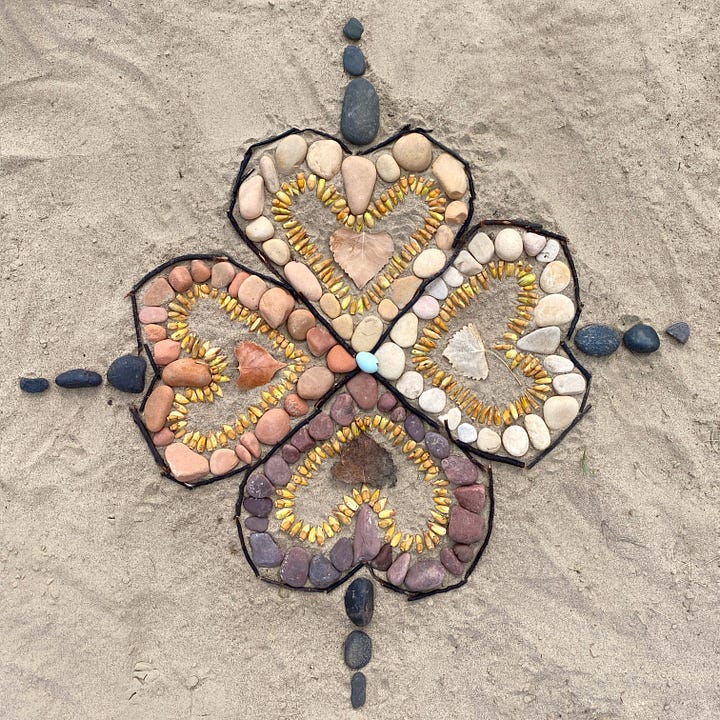
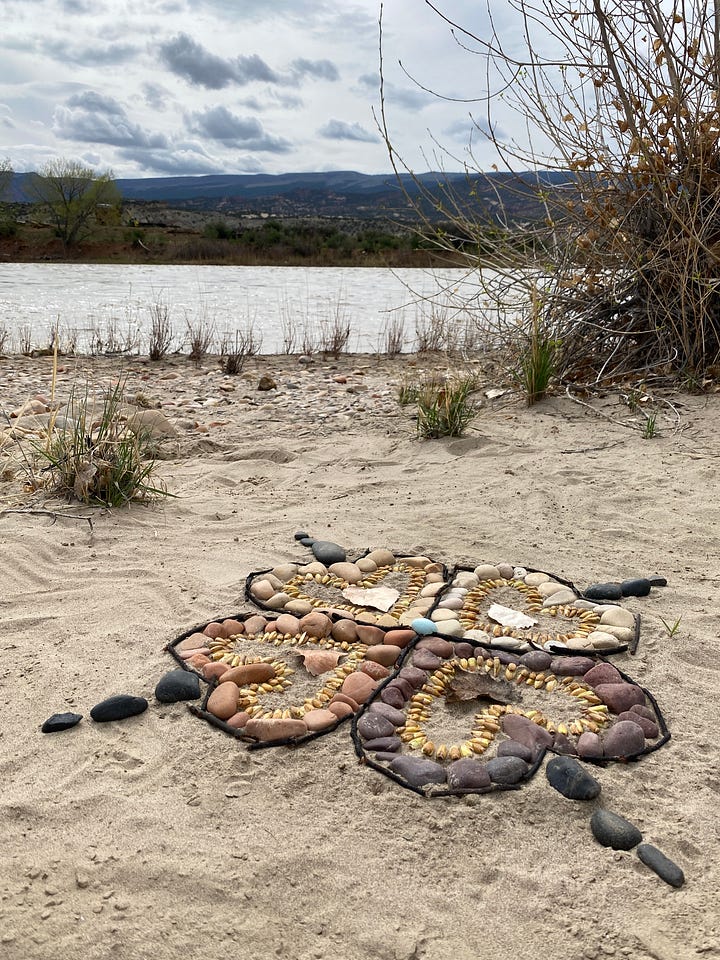
Land art connecting to environmental action
Land art is inherently tied to its location and encourages viewers to think about the environment around them. It can show off the natural materials and biodiversity of an area, and may point out especially beautiful places, problems, human impacts, landscape restoration ideas, environmental justice issues, or the local history.
Think of this art as a communication tool to raise awareness, creatively problem solve, and inspire action. Viewers often have emotional responses to artwork, and the connection between art and the land becomes a pathway for sharing an appreciation for a place. When that work is also highlighting the delicate connections in nature or damage by humans, it reminds us of the importance of maintaining a balance and minimizing harm, or restoring natural systems.
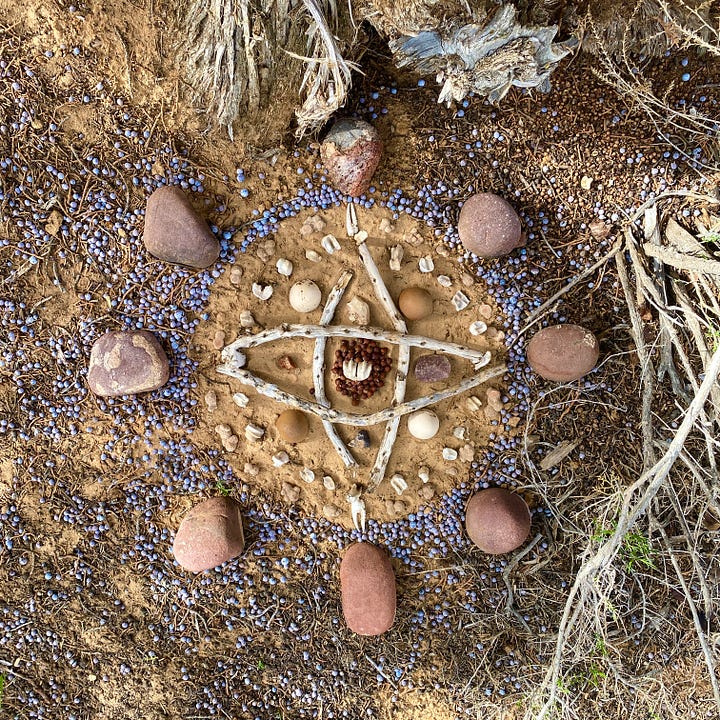
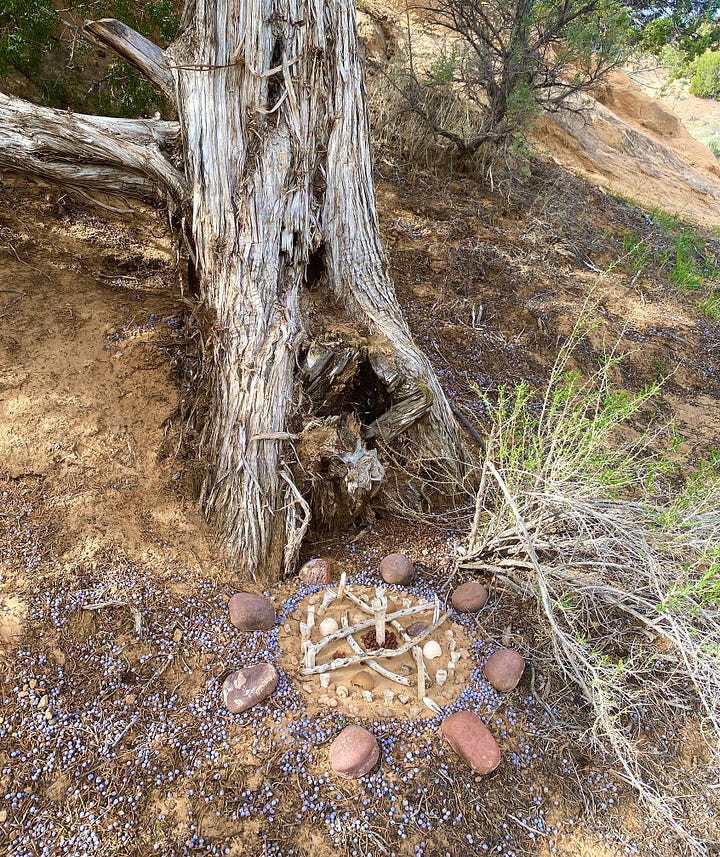
Land artists work sustainably by using renewable resources like leaves or sand to create patterns. They may grow plants on the landscape for an ecological reason, or to highlight human needs or destruction. Land artists can be leaders in promoting natural or recycled materials, reducing waste, and considering the repercussions of the arts on our environment while still creating lovely or important work.
Nature, creativity, and community
As part of the Yampa Valley Sustainability Council (YVSC) engagement with artists and community members leading up to Insight: Art for Climate Action, an art exhibition coming in March 2026, YVSC led a group in making temporary land art this summer. We explored the trail that winds along Butcherknife Creek through a natural corridor in the middle of Steamboat Springs, Colorado. In addition to spending exploratory creative time outside, we also learned from wildlife biologist Jeremiah Psiropoulos about local birds and plants, found a beaver dam, and saw a red-tailed hawk fly away with a snake in its claws.
Sloane Speer, a YVSC intern, organized the outing and noticed teamwork in action.
“During the assembly of the mandala, some kids found their role running far and wide to find a certain colored stick or leaf,” said Speer. “Some older participants chose not to bend down to the ground, instead giving guidance and encouragement from a standing vantage point, while others found a corner of the mandala to create quietly. This aspect of the land art outing showed what can be accomplished through collaboration, a crucial part of YVSC's work and climate action as a whole.”
Observe, identify, collect, create
Do you want to make land art? These projects are often collaborative, so take friends or family somewhere that inspires you. Wander slowly and carefully, looking for animal tracks, bones, or feathers. Do you see blooms, berries, or colorful fall leaves? What are the common types of rock? Are there sticks, bark or pinecones on the ground to use? What do you hear?
This type of observation is really informative and rewarding. It’s great to bring a field guide or ID app on your phone. Knowing an area well means you can observe changes over time, and advocate for protecting or restoring it with the knowledge gained from your observations.
Nature arranged, art assembled
After exploring the short trail and creek and filling up our tote bags with found natural materials, our group of new land artists created a marvelous, collaborative, temporary artwork. With some communication a design formed, changed, and after I bumped the main structure, was rebuilt even better. Participants of all ages placed their treasures carefully. We chatted, talked about bird nests and magpie feathers, took photos, made shapes from sticks, and had a peaceful time together.
We hope you will also try some land art on your next camping or hiking trip. It’s best not to build rock cairns or land art while in the wilderness because it may confuse people about the location of a remote path, or detract from their experience. However, in a more public area like a campground, common walking path, or on private property with approval, it’s a lot of fun. Give it a try and connect with nature in a creative way!









